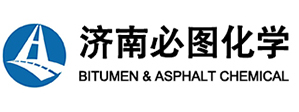- mike@bitumenchem.com
- +86 15066607710
- Tongfa Avenue, Changqing District,Jinan
Location: Home > News & Trends > Industry News
According to research, the nature of the solvent directly affects the reaction speed and the quality of the product. In different organic solvents, the decreasing order of reaction speed is toluene, toluene/cyclohexane, and cyclohexane, and the suitable reaction temperatures are 50°C, 60°C, and 70°C respectively. This shows that when toluene is used as the solvent, the reaction speed is the fastest and the epoxy group mass fraction of the product is relatively high.
The strength and concentration of organic acids also have an important impact on the epoxidation reaction of SBS. Research shows that the order of decreasing strength of acids is formic acid, formic acid/pure acetic acid, acetic acid, pure acetic acid. Under the same reaction conditions, appropriately increasing the amount of acid will help improve the efficiency of the epoxidation reaction. The mass fraction of epoxy groups increases with the increase in the amount of acid. However, excess acid will promote the occurrence of side reactions, resulting in a decrease in the mass fraction of epoxy groups. Therefore, it is crucial to control the amount of acid. An appropriate molar ratio can significantly improve the selectivity of the reaction and the quality of the product.
In summary, selecting the appropriate organic solvent and organic acid concentration is crucial to optimizing the epoxidation reaction of SBS, which can effectively improve the reaction efficiency and product quality.
- Is the preparation method of SBS modified bitumen
- Can we predict the performance and stability of mo
- Advantages and Disadvantages of Segregation Test t
- BAC:Lower cost and higher reliability
- In the production process of rubber bitumen, the c
- What are the conditions that affect the epoxidatio
- What are the performance characteristics of modifi
- Why is excessive coupling agent the main cause of







